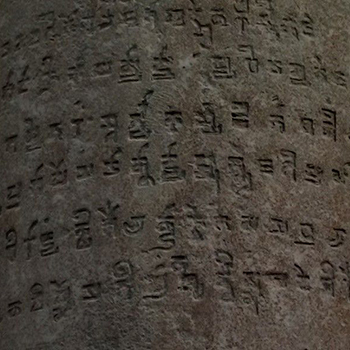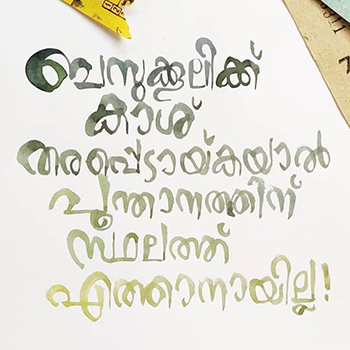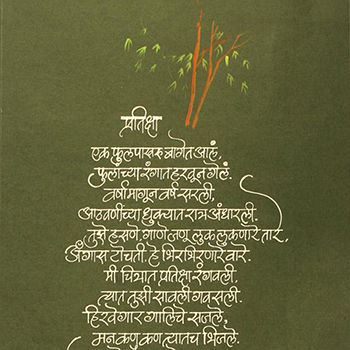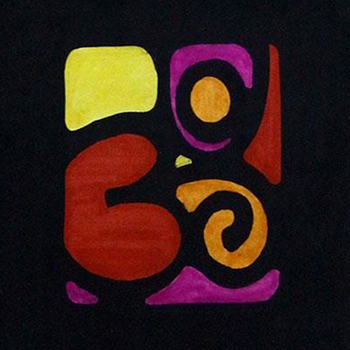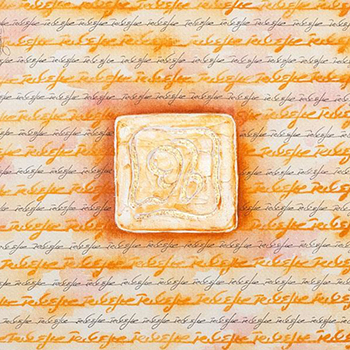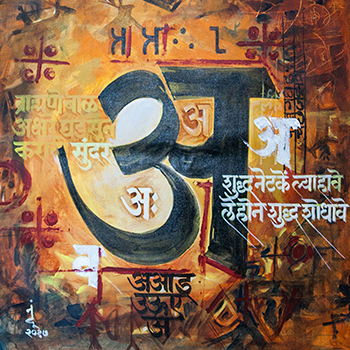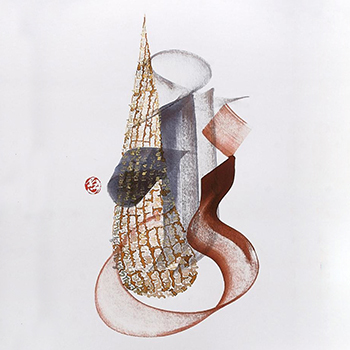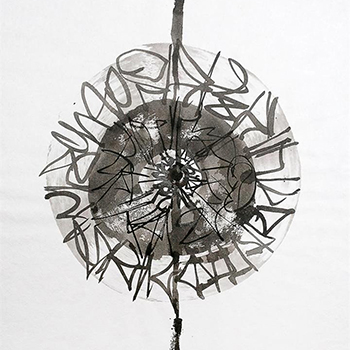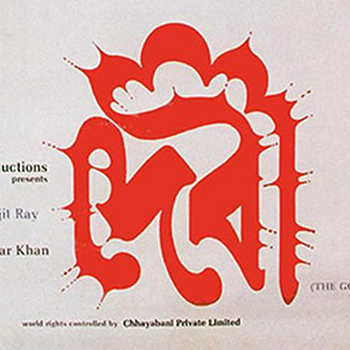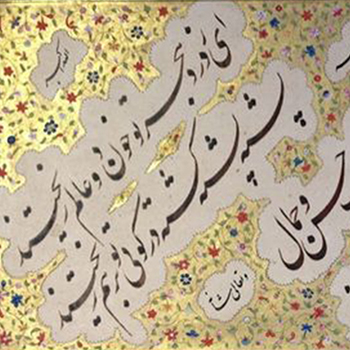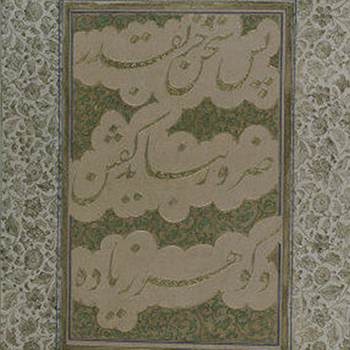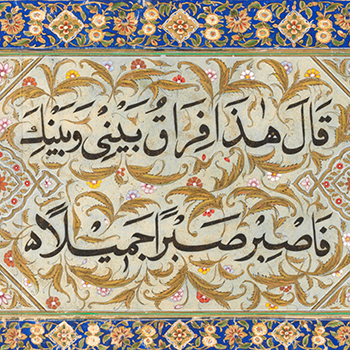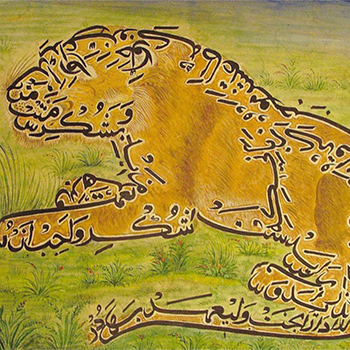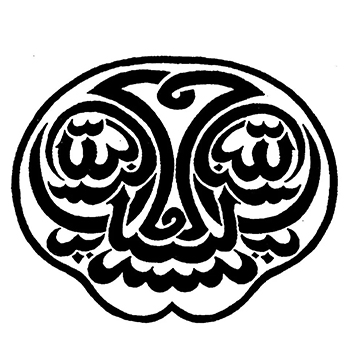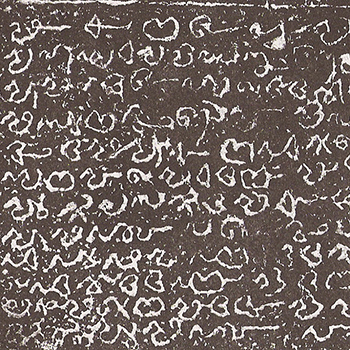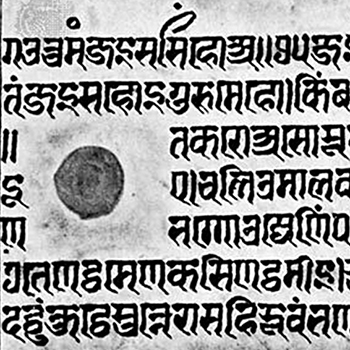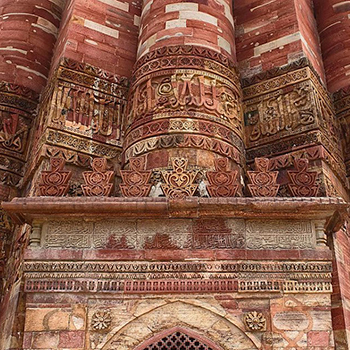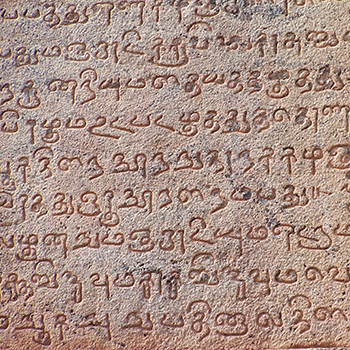Evolution of Calligraphy in India
(300-499)
Pre Industrialisation
(1 items)
(2020-2024) Post-Independence
(1 items)
(2010-2019) Post-Independence
(10 items)
(2000-2009) Post-Independence
(3 items)
(1980-1999) Post-Independence
(1 items)
(1960-1979) Post-Independence
(1 items)
(1947-1959) Post-Independence
(1 items)
(1800-1899) Pre-Independence
(5 items)
(1700-1799)
Pre Industrialisation
(1 items)
(1600-1699)
Pre Industrialisation
(4 items)
(1500-1599)
Pre Industrialisation
(1 items)
(1400-1499)
Pre Industrialisation
(2 items)
(1200-1299)
Pre Industrialisation
(1 items)
(1000-1099)
Pre Industrialisation
(1 items)
Evolution of Calligraphy in India
(1 items)
Amit Kharsani
Amit Kharsani is a graphic designer and educator associated with NID since 1978. He is currently employed at the United World Institute of Design as a faculty member. He had started calligraphy under renowned calligrapher Late Shri R. K. Joshi from the Aksharyoga International calligraphy workshop in 1986. In addition, he conducted numerous independent workshops both domestically and abroad, where he won the title of "international calligrapher" at the Aakara workshop.
Details >>(1000-1099)
Pre Industrialisation
(1 items)
Tamil Manuscript from Thanjavur
This script was found on the temple walls of the Tanjavur Bragadeeshwara temple. This is very different from the present Tamil script. It was built by Raja Raja Chola (who ruled from 1985–1014 Common Era). The Big Temple is not only a magnificent edifice with its majestic vimana, sculptures, architecture, and frescoes, but also has a wealth and richness of Tamil inscriptions engraved on stone in superb calligraphy. The temple walls have numerous inscriptions in Tamil and Grantha scripts. Many of these begin with a customary Sanskrit and Tamil historical introduction to the king who authorised it, and a predominant number of them discuss gifts to the temple or temple personnel, in some cases residents of the city.
Details >>(1200-1299)
Pre Industrialisation
(1 items)
Calligraphic band inscriptions on Qutub Minar
The majestic Qutb Minar of Delhi stands tall, adorned with both Arabic and Nagari inscriptions. Most of the Nagari inscriptions are records of the various repairs made to the Minar over the years. Some of these inscriptions are unfortunately unintelligible and incomplete, but they still provide us with valuable insight into the history of the Qutb Minar and the people who have worked to maintain it. Many inscriptions in Arabic and Nagari characters scattered throughout the Minar reveal its rich history. Nagari inscriptions also record the names of three sultans whose records are not found in Arabic inscriptions: Muhammad Tughlaq, Ala-ud-din Khilji, and a certain Malikdin. These inscriptions show that the monument was not only regarded as a mazina but also a tower of glory and victory.
Details >>(1400-1499)
Pre Industrialisation
(2 items)
Nandinagari inscription
The Nandinagari script was used in southern India until the 19th century. Some of the earliest writings in Nandinagari are inscriptions in stone found in Mamallapuram, a town in northern Tamil Nadu, dating from the 7th century AD. It was also used in the states of Maharashtra, Karnataka, and Andhra Pradesh and in the official script of the Vijayanagara Kingdom (1336–1646). Nandinagari was mainly used to write Sanskrit and also to write Kannada in Karnataka. Nandinagari was inscribed in stone and on copper plates and written on palm-leaf manuscripts or on paper. There are also coins with Nandinagari on them from the reign of King Rajaraja I (c. 985–1014) of the Chola Dynasty. There are manuscripts of the Rigveda and other Vedas in Nandinagari, as well as other literature.
Details >>Sanskrit document
Devanagari is the alphabetic form most closely linked with Sanskrit. The pen's nib is sliced broad in a 15th-century manuscript housed in the Freer Gallery in Washington, D.C., which results in a noticeable variation in the thickness of the strokes. The strong horizontal top line, which has the potential to link, is where the alphabetic signs are suspended. The Devanagari script has maintained the strong horizontal and vertical emphasis of inscription writing over time, and contemporary typefaces and instructional guides emphasise this stiffness of execution. This antique script might be more elegant and friendly in casual writing.
Details >>(1500-1599)
Pre Industrialisation
(1 items)
Muttuchira Lithic inscription
Muttuchira lithic inscriptions are early Malayalam inscriptions (Vattezhuthu, Nanam Monum) on a granite tablet found in Muttuchira. The 'Muttuchira inscriptions' are inscriptions narrating the installation of the free standing cross and the Pahlavi-inscribed bas relief cross, the 'Muttuchira Sliva'. The inscriptions are on a rectangular granite slab in two sections, divided by a vertical line in between. According to Mr. T. K. Joseph [eminenthistorian], this inscription must be from AD 1581 or later. This tablet has been the subject of extensive research by many scholars. This granite slab was found on the western wall of the ground-floor room of the two-story building attached to the northern side of the old Church of the Holy Ghost. The upper story was used as the priest's home, and the ground floor was used as the sacristy.
Details >>(1600-1699)
Pre Industrialisation
(4 items)
Calligraphy folio from the Shah Jahan Album
The 50-leaf folio known as the Shah Jahan Album is filled with calligraphy, illuminated pages, and portraits. The calligrapher Mir 'Ali of Herat is credited with many of the calligraphic pieces in the folio. Older calligraphy and art were frequently rearranged inside Mughal margins and added to albums from the Mughal era. The calligraphy and the illumination surrounding it are likely from the seventeenth century. This dating is supported by the carefully portrayed floral plants and grazing animals that adorn the piece.
Details >>Inscriptions on Akbar’s tomb
Akbar finalised the plan of his tomb during his lifetime only, but later his son Jahangir made many changes to the original form. Jahangir's participation is seen in the exquisite white marble ornamentation at the tomb's entrance gate. There are Arabic and Persian inscriptions on the gate's facades. It contains praising words for the emperor, modified quotations from the Quran, and on the last panel, the name of the calligrapher with a date, Abdul Haq Shirazi in 1022 A.H. (1613 AD). Thuluth script is used to carve the inscription on a white marble surface. The inner grave chamber has no inscription with a plain cenotaph of the emperor. A lengthy calligraphic band with a blue backdrop in stucco and a golden colour is located close to the ceiling in the vestibule before the grave chamber. There are passages from Surah Al-Mulk, Surah Al-Ahzab, and Surah As-Saffat in the Thuluth script inscription.
Details >>Decorative Inscriptions on Taj Mahal
The big gate of Taj Mahal has an inscription that says, "O Soul, thou art at rest," welcoming guests, which means come back to the Lord in harmony with Him and with yourself. Quranic verses have been included in the complex as ornamental components. Arabic inscriptions in black marble adorn the main tomb and the south entryway. The black marble lettering is inlaid into white marble scroll-like borders that frame the architectural features. A significant emphasis on horizontal and vertical strokes combined with sweeping letters in certain areas gives the design an almost grid-like look. The phrase is written in the 'thuluth' script, a calligraphing style that is specifically linked to Amanat Khan, a Persian calligrapher who lived at the Mughal court.
Details >>Nasta‘liq Calligraphy
Nasta 'liq is one of the styles of Islamic calligraphy that was developed on Persian grounds by Persian calligraphers. Many scholars think that the characteristics of the two previous scripts, Naskh and Ta'liq—where Ta'liq means "hanging"—formed the basis of this style. According to some scholars, nasta 'liq, also known as naskh ta 'liq, is essentially a hanging form of naskh. This script originated in Persia and was written in two styles: Eastern and Western. The Western style was less graceful than the earlier and was finally ignored in Persia because of its sharper appearance, unusually long elongations, and poorly proportioned dimensions. The Eastern style, perfected over the course of centuries, is the style that is currently in use today.
Details >>(1700-1799)
Pre Industrialisation
(1 items)
Imagery of tiger used by Tipu Sultan
Tipu adopted the tiger motif in multiple ways as his own symbol. Easily the most noticeable examples are the decorative tiger head and the characteristic stylized tiger stripe, called babri from the word babr, which means 'tiger'. This is based on an Arabic calligraphy style called khatt mukabil or khatt ma-kus, which means a line that has been inverted or reverted. It is more elaborate. The term asad allah ul-ghalib, which translates to "the victorious lion of God," is also included in the calligraphic tiger motif. Examples of its use on Tipu Sultan's belongings include a banner and some of his military weapons and equipment.
Details >>(1800-1899) Pre-Independence
(5 items)
Calligraphy by Sayyid Muhammad Amir Rizvi
Sayyid Muhammad Amir Rizvi was a famous calligrapher from Delhi in the Mughal period.
Details >>Calligraphy by Prince Muhammad Sultan Fath al-Mulk Shah
This calligraphy is by Mirza Muhammad Sultan Fath al-Mulk Shahi, son of the last Mughal ruler, Bahadur Shah II.
Details >>19th century illuminated and embossed calligraphy
This image is from an Indian album, dated 1866–67, at the Victoria and Albert Museum. India began to receive and practice fingernail art in the latter part of the 1800s. The method remained essentially the same, but it was enhanced with native decorations like colouring, gilding, and lighting the previously unadorned surface. The calligraphy's elevated surface and background are gilded in addition to its lit borders.
Details >>Arabic manuscript in Naskhi script
This Arabic manuscript on paper has text written in two lines of bold, large naskhi script in black ink on a pale green ground. It is decorated with vegetal motifs in gold and further illuminated cornerpieces, as well as blue, gold, and brown illuminated borders.
Details >>Calligraphy by prince Darabakht
This calligraphy was done by Prince Darabakht, heir to Mughal Emperor Bahadur Shah II. The eldest son of Bahadur Shah II, Mirza Dara Bakht Miran Shah Bahadur, was the crown prince of the Mughal Empire from 1837–49.
Details >>(1947-1959) Post-Independence
(1 items)
Handcrafted Constitution of India
The original Constitution book was handcrafted by artists in Santiniketan under the guidance of Nandalal Bose. The original constitution was written by him in a flowing italic style. Each page had some artwork, and the calligraphy in Hindi and English was done by Prem Behari Narain Raizada. The Constitution was published in Dehradun and photolithographed by the Survey of India.
Details >>(1960-1979) Post-Independence
(1 items)
Calligraphy by Satyajit Ray
Probably one of Ray's most well-known and iconic designs is the Devi poster. Using imagery associated with the goddess Kali, he portrays the main character, Dayamoyee, played by Sharmila Tagore, with large almond-shaped eyes staring straight at the audience, a scarlet bindhi, and thickly arched and adorned eyebrows. The image has an even more bizarre and elevated quality due to the division of her face into light and dark colours, which represent the division between her more aggressive and kinder aspects. The title typography is made to resemble a temple.
Details >>(1980-1999) Post-Independence
(1 items)
R. K. Joshi
Professor Raghunath K. Joshi (1936–2008): calligrapher, designer, poet, researcher and teacher. Prof. Joshi spent 15 years teaching design courses IDC/IIT in Mumbai. Prof. Joshi helped develop font design software, Indian language word processing packages and designed series of Indic fonts for Microsoft Windows and Linux. He applied it to the Indian context and explored Indic scripts in Calligraphic styles. This Calligraphic representation is named as experiments.
Details >>(2000-2009) Post-Independence
(3 items)
Qamar Dagar
Qamar Dagar is a professional contemporary pictorial calligrapher who combines Hindi and Urdu scripts using alphabet characters as art material to express visual interpretations around her thematic concerns. This calligraphy, named The Seventh Note, is done using ink and acrylic on paper.
Details >>Achyut Palav
Achyut Palav has worked in diverse mediums and on different concepts. He works with various scripts and languages from around the world, his fondness leaning towards the Indian scripts, mainly the Devnagri script. He is a graduate of art from the Sir J.J. Institute of Applied Art, Mumbai. This calligraphy, named Akshar Chakra (Circle of Letter), is done on handmade paper using Chinese ink, a foam brush, and a round brush.
Details >>Manohar Vitthal Desai
Manohar Vitthal Desai is known nationally and internationally for the application of calligraphy on canvas in his paintings. Currently, he is working as ‘Head of the Dept. Communication Design—Graphic Design in Symbiosis Institute of Design, Pune. He treats letters as a form in his compositions. His mastery of vibrant and energetic colours in his compositions is highly appreciated by many experts on the international platform. 10 of his calligraphic paintings are part of the collection at the International Calligraphy Museum in Moscow, Russia.
Details >>(2010-2019) Post-Independence
(10 items)
Manohar Vitthal Desai
Manohar Vitthal Desai is known nationally and internationally for the application of calligraphy on canvas in his paintings. Currently, he is working as ‘Head of the Dept. Communication Design—Graphic Design in Symbiosis Institute of Design, Pune. He treats letters as a form in his compositions. His mastery of vibrant and energetic colours in his compositions is highly appreciated by many experts on the international platform. 10 of his calligraphic paintings are part of the collection at the International Calligraphy Museum in Moscow, Russia.
Details >>Qamar Dagar
Qamar Dagar is a professional contemporary pictorial calligrapher who combines Hindi and Urdu scripts using alphabet characters as art material to express visual interpretations around her thematic concerns. Calligraphy has moved across paper, coins, seals, metal objects, copper plates, arms and armour, etc., wherein it has also blended with flora and fauna designs. This calligraphy, named Ganga Jamuna (The Confluence), was exhibited at the India International Centre, New Delhi.
Details >>Mohan Jayant Saraf
Mohan Jayant Saraf is a calligrapher and photographer who graduated with a five-year government diploma in applied arts from the J.J. Institute of Applied Arts, Mumbai. He initially started his career as a calligrapher, and a few years later, he added photography to his profession. This calligraphy, named The Existent, was created on paper using round brushes and photo colours.
Details >>Mohan Jayant Saraf
Mohan Jayant Saraf is a calligrapher and photographer who graduated with a five-year government diploma in applied arts from the J.J. Institute of Applied Arts, Mumbai. He initially started his career as a calligrapher, and a few years later, he added photography to his profession. This calligraphy, named Contours and Colours, was created on Japan T.K. paper using round brushes, round nib markers, and photo colors. The script used in this calligraphy is Modi Script, which uses alphabets with strokes of round markers and fills the contours with photo colours.
Details >>Achyut Palav
Achyut Palav has worked in diverse mediums and on different concepts. He works with various scripts and languages from around the world, his fondness leaning towards the Indian scripts, mainly the Devnagri script. He is a graduate of art from the Sir J.J. Institute of Applied Art, Mumbai. This calligraphy, called Core Energy, was created with a round brush and steel, black Chinese ink and gold acrylic colour, and Devnagari Script letters.
Details >>Anaroop Kerketta
Anaroop is a freestyle calligraphy artist from Mumbai. He believes in experimenting and exploring unlike and unconventional style in calligraphy. The name of this calligraphy is I just did it. steel bristles, cartridge sheets, and stencil ink were used to create this calligraphy.
Details >>Anaroop Kerketta
Anaroop is a freestyle calligraphy artist from Mumbai. He believes in experimenting with and exploring unconventional styles in calligraphy. The name of this calligraphy is Imperfection. Stencil Ink, Steel Brush, Cartridge Sheet, and Water Drop were used to create this calligraphy.
Details >>Kamaljeet Kaur
Kamaljeet Kaur, a Ludhiana-based calligrapher, worships Gurmukhi calligraphy. She, as a versatile calligrapher, has made a mark for herself in the profession worldwide. She has been working as a professional calligrapher in Gurmukhi, Devnagri, and English for the past 18 years. This calligraphy, named Ek Onkar,was engraved on paper using gouache, gold leaf, acrylics, and a pen.
Details >>Nandu Gawande
Nandu Gawande was known as a great artist and calligrapher. From an early age, he had a penchant for drawing and writing. After schooling, he completed his art course in Nashik and later in Mumbai. His skills enabled him to write letters as calligraphy and images, working with various tools, including pens, brushes, and later computers. Due to his skill, he had made various advertisements, logos, signs, layouts, and book covers for many organisations, newspapers, academies, magazines, politicians, etc. This calligraphy, named "I," was created using a round brush and boru with acrylic on canvas.
Details >>Nandu Gawande
Nandu Gawande was known as a great artist and calligrapher. From an early age, he had a penchant for drawing and writing. After schooling, he completed his art course in Nashik and later in Mumbai. His skills enabled him to write letters as calligraphy and images, working with various tools, including pens, brushes, and later computers. Due to his skill, he had made various advertisements, logos, signs, layouts, and book covers for many organisations, newspapers, academies, magazines, politicians, etc. This calligraphy, named "The First Word," was created using a round brush and boru with acrylic on canvas.
Details >>(2020-2024) Post-Independence
(1 items)
(300-499)
Pre Industrialisation
(1 items)
Inscriptions on the Iron Pillar
The Iron Pillar, located in New Delhi in the Qutub complex, is notable for the rust-resistant composition of the metals used in its construction. Despite the pillar's obvious location and easy access, it bears a number of inscriptions with varying dates, some of which have not been thoroughly studied. The earliest inscription on the iron pillar is a six-line Sanskrit inscription in archaic Gupta Brahmi script. The inscription, attributed to either Chandragupta Samudragupta or his son Chandragupta II, speaks of the tremendous conquests made by a mighty monarch by the name of Chandra. Because the etched iron is resistant to corrosion, the old writing has been preserved well. However, during the engraving process, iron appears to have closed up over some of the strokes, making some of the letters imperfect.
Details >>